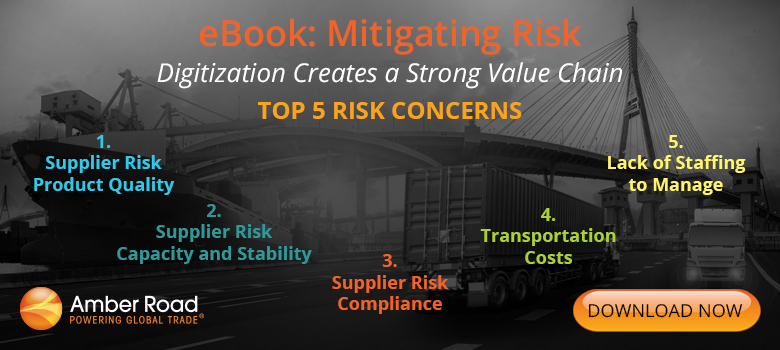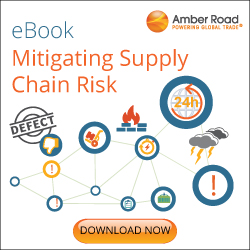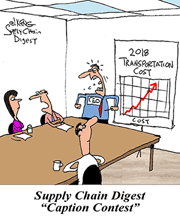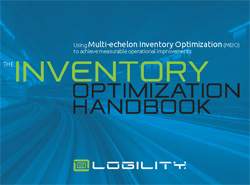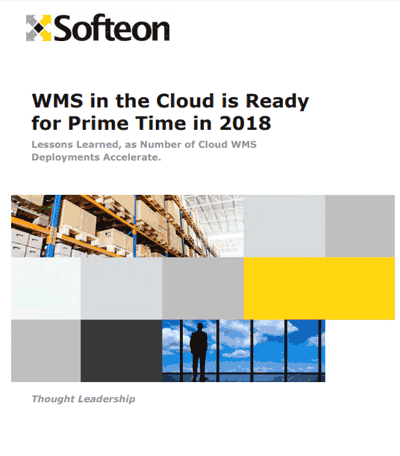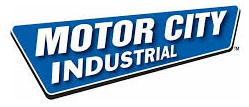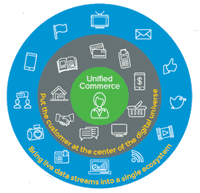Smart Ideas for Reducing Transport Costs
We are obviously in what may be unprecedented period of rising transportation costs. The Cass Linehaul Index, which measures US truckload rates, was up 9.5% year-over-year in June - the largest monthly jump in the history of the index since its inception in January 2005. That broke the previous record of a 9% jump just before that in May.
What's more, rising oil and diesel costs are adding a double whammy to shippers. Many prominent companies are citing rising transportation costs as putting real pressure on the bottom line.
Just getting capacity is a parallel issue, with shippers reporting they might have to tender to more than a dozen carriers to get one acceptance - if they can get one at all.
| GILMORE SAYS: |
Lots of companies claim to be interested in being the shipper of choice, but for many if not most, it's just lip service.
WHAT DO YOU SAY?
Send us your
Feedback here
|
So what can shippers do? Below is a list of ideas, combining some maybe obvious ones with some more out of the box thinking, in some cases as noted coming from others.
Dust off the Trade Curves: Every company is operating along some trade off curve(s) that classically balances transportation costs versus inventory and/or service. Where are you on the curve, and should you move along it towards say more inventory, lower transport costs? Time to get out the textbooks.
Get a Real TMS: Repeating what I and I am sure many others said in the 2004-05 era, if you can't justify a new, upgraded TMS now, something isn't right. And the availability to access every TMS today on the Cloud means much faster time to benefit, and much less IT disruption and need for those scarce resources.
Good enough is no longer good enough. From load consolidation to optimal routing (note even UPS keeps upgrading its routing technology) to automated tendering and more, a quality TMS is simply a competitive necessity.
Model Your Network: If your logistics network is even moderately complex, modeling your network provides enormous opportunities to analyze operations and flows to look for freight savings opportunities. It also enables the ability to rapidly answer questions as needs/opportunities change.
Such modeling can come from a formal supply chain network design tool (e.g., LLamasoft) or custom model creation, from someone like my friend Dr. Mike Watson and his firm OpEx Analytics, among others.
Such modeling has moved from a nice to have to a must have. If you haven't done it, you are missing opportunities.
Mine Your Data: While things are certainly better today for many shippers than just a few years ago, few companies still well mine and leverage what is usually mounds of data to look for opportunities and just as importantly where dollars are leaking out of the system.
For example, a major consumer goods company recently found several sources of leakage from rates as achieved through a carrier bid optimization process to what was actually achieved in actual execution, and closed many of those holes.
Get More Freight on Each Truck: The reality is that few companies fully maximize their loading capacities. This is for a variety of reason, including a lack of technology. A company such as Warehouse Optimization optimizes pallet builds and then full truck loading in a way that maximizes available trailer cube, generating savings of 4-8%.
More Consistently Execute According to Plan: Do you track what percent of outbound are executed according to plan? My experience is that many don't, and that this leads to extra costs. There can be a variety of reasons, from changed/cancelled orders to lack of process discipline. But as with most such measurement, simply focusing on the metric will likely bring improvement in the results.
Trading Partner Collaboration: While, depending on the sector, there is a fair amount of supplier-customer collaboration going on out there, I think we can all agree there is room for a lot more, which can take transportation costs out for almost free.
In its current precarious financial state, I am not sure what is happening at former retail giant Sears, but about a decade ago it built a technology tool to pursue what it called "Collaborative Transportation Engineering." The system and approach allowed Sears to take data on logistics from its suppliers, marry that with its own network and flows, and a huge percentage of the time find savings opportunities that would be shared between the two companies.
Horizontal Collaboration: This typically refers to transportation collaboration between others unconnected companies. The simplest example is finding other shippers that have complementary freight moves to enable round trips or continuous moves. While attempts in the US to do this from a centralized platform (i.e., the old Nistevo system) have largely fallen flat, many companies are doing it more informally, generally reducing freight costs and in this environment locking up capacity.
So, maybe you should start "dialing for dollars" with other shippers in the neighborhood to explore opportunities. The barrier here is primarily simply behavioral.
But horizontal collaboration can go far beyond load linking. For example, there is the concept of "co-mingling" freight, where a company that ships dense heavy products might combine loads with a maker of light, bulky products, such as insulation. The combo results in more fully utilizing the trailer and saves money for both parties.
Unfortunately, the concept is much more mature in Europe than the US (more on this someday soon). I spoke with one consultant last year who said that while shippers know such opportunities exist, there are always so many other opportunities for transportation improvement without horizontal collaboration that it just can't make the priority list. There is quite a lot in that simple statement, if you think about it.
Better Connect Procurement to Transportation: Taking basic control of inbound only takes you so far. More opportunities probably exists in optimizing purchase order timing and quantities to deliver maximize transport efficiency. It takes quite a bit of analysis, but such an effort can lead to savings of 15-25%, US Foods found a few years ago.
Become the Shipper of Choice - Really: Lots of companies claim to be interested in being the shipper of choice, but for many if not most, it's just lip service. Processes really don't change substantially, or regress after temporary improvements. And that means it will be all the harder to get a carrier to take your load.
I recently had the CEO of a small carrier (60 trucks) tell me things are still so bad in the food/grocery sector (loading delays, requirement to use lumpers, etc.) that right now he is accepting no tenders from those shippers. And in this environment, he doesn't have to.
How easy or not it is for carriers not only at your facilities but those of your customers makes a huge differences in how likely it is that a carrier in this environment will accept your move.
My friend Mike Regan of TranzAct Technologies tells the tale of Ardent Mills, which as part of its program to become the shipper of choice collected survey responses from 800 drivers that served its facilities - and use that insight to drive improvements that made things better for drivers and carriers, getting more consistent acceptances as a result.
Get Smarter about when to Use the Spot Market - or Not: Geoffrey Milson, a senior director at consulting firm enVista, tells me, based on analysis of historical truckload shipment data compared to market spot and market contract rates, he's finding that shippers have a very hard time establishing the "optimal mix" of each on their lanes.
What this means, he says, is shipper often turn to the spot market when they shouldn't, and don't when they should. While he says it isn't realistic for any shipper to achieve the optimal mix, often shippers are getting this wrong than 50% of the time. With a more real-time understanding of the markets, costs can be reduced.
Get Your Processes Tighter: Regan also says that currently, if you are giving carriers only 24-48 hours to pick-up a load, you are likely going to pay 15-20% more than if you give the carriers say four days.
But this takes process discipline and cross-functional collaboration - not easy. But the prize seems worth the effort - and it seems Lean Six Sigma type techniques could be well leverage to address the challenges.
Think this is a pretty good list - what would you add?
Any reaction to Gilmore's list of ideas to reduce transport costs? What would you add? Let us know at the Feedback button below. |



![]()

![]()

![]()

![]()

